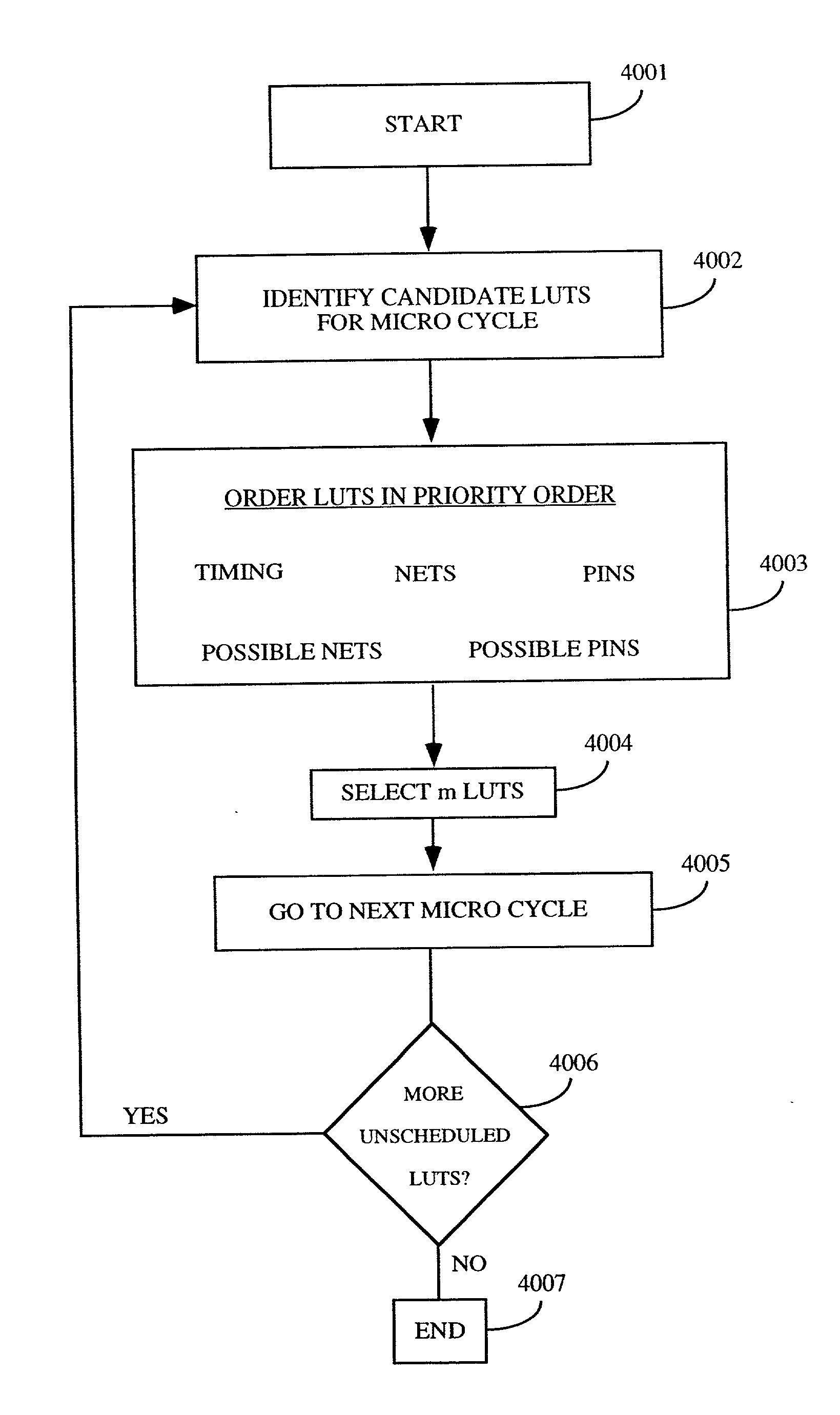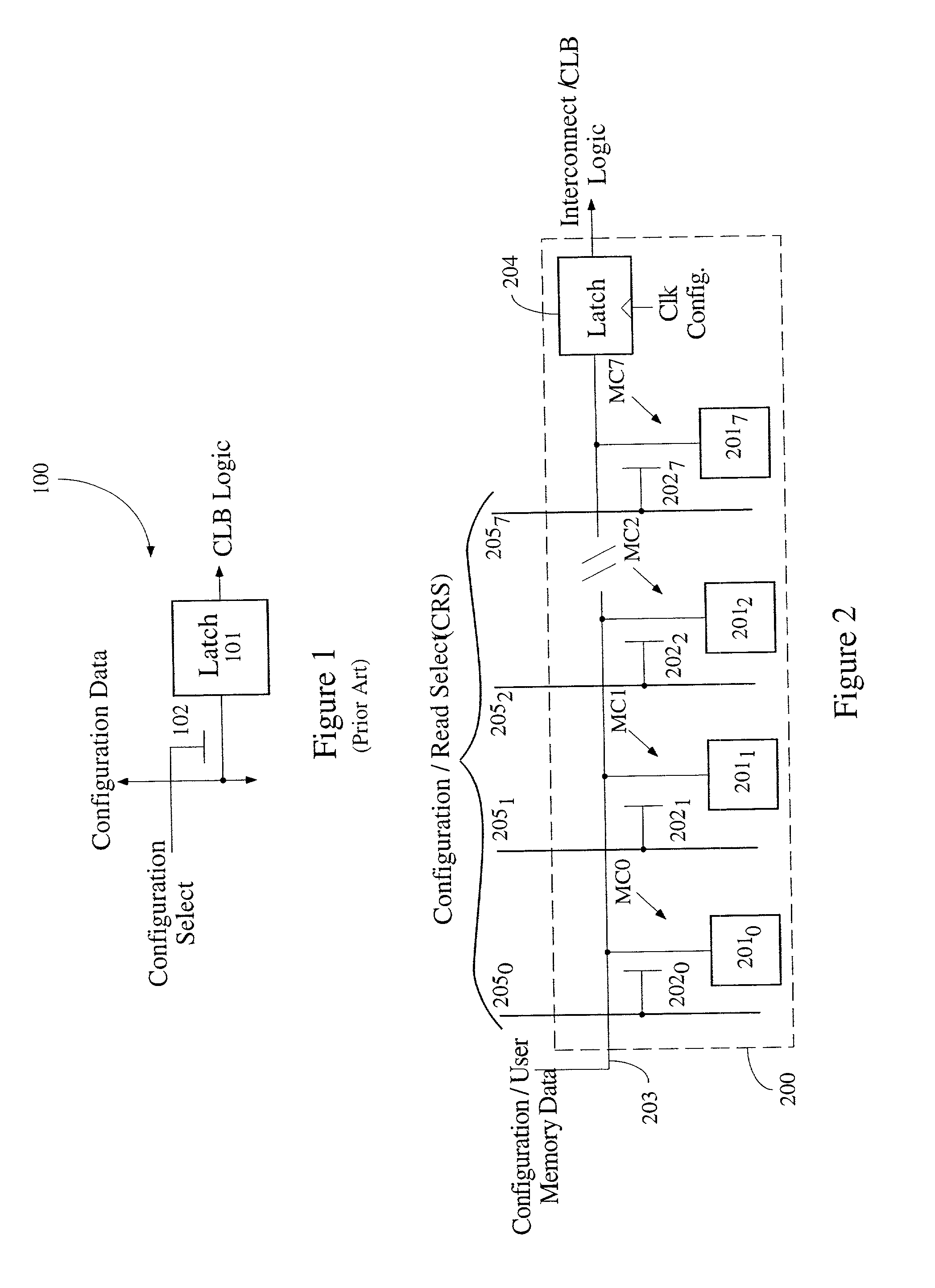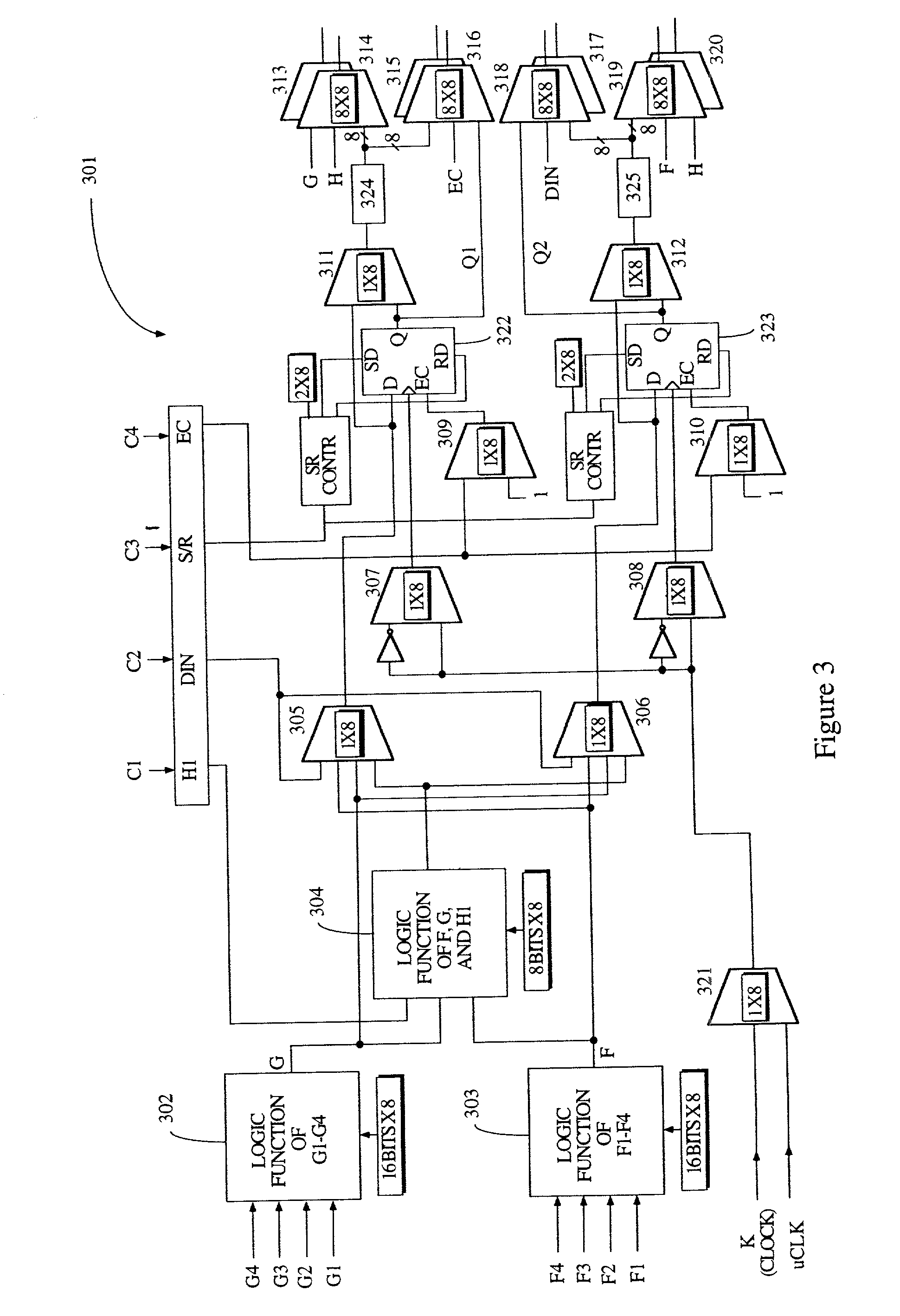Method of time multiplexing a programmable logic device
- Summary
- Abstract
- Description
- Claims
- Application Information
AI Technical Summary
Benefits of technology
Problems solved by technology
Method used
Image
Examples
second embodiment
[0116] Micro registers 324 and 325 (FIG. 3) are located in alternative places. In one embodiment (shown in FIG. 3), micro registers 324, 325 are coupled to the input terminals of output multiplexers 313-320. In a second embodiment, the micro registers are coupled to the input terminals of logic function generators 302 and 303. If, for example, micro register 324 is coupled to the input terminals of logic function generator 302, then multiplexers 313-316 are simplified. Note that if two signals are generated in the same configuration and those signals are needed on the same pin of logic function generators on different configurations, a conflict arises. Specifically, if the micro registers are coupled to the input terminals of the logic function generators, two signals provided to those micro registers cannot be provided on the same configuration.
third embodiment
[0117] In a third embodiment, the micro registers are located in the interconnect, wherein signals are routed to the micro registers when available and routed from the micro registers when needed. In one instance, the micro registers are assigned independently of the logic function generators doing the calculation. In this manner, a placement program can automatically select only those micro registers having no conflict. This embodiment provides maximum flexibility as to data storage location.
fourth embodiment
[0118] In a fourth embodiment, the micro registers are located in a storage location independent of the configuration. The address or part of the address may be configuration bits or placement location. In this manner, only those values to be kept are stored and only locations that have no conflict are selected.
[0119] 2.2 Bus Hierarchy
[0120] As described above in the Description of the Related Art, each configuration operation in a prior art FPGA is controlled by a set of configuration memory bits. The busses used to load these configuration bits typically form a single level of hierarchy, with vertical address lines spanning the full height of the CLB array, and horizontal data lines (referred to as a global bus) spanning the full array width.
[0121] In accordance with the present invention, each of the prior art configuration memory bits is replaced by N bits. Those N bits, i.e. the bits stored in memory cells MC0-MC7, are connected via their local busses 203 through switches 700 t...
PUM
 Login to View More
Login to View More Abstract
Description
Claims
Application Information
 Login to View More
Login to View More - R&D
- Intellectual Property
- Life Sciences
- Materials
- Tech Scout
- Unparalleled Data Quality
- Higher Quality Content
- 60% Fewer Hallucinations
Browse by: Latest US Patents, China's latest patents, Technical Efficacy Thesaurus, Application Domain, Technology Topic, Popular Technical Reports.
© 2025 PatSnap. All rights reserved.Legal|Privacy policy|Modern Slavery Act Transparency Statement|Sitemap|About US| Contact US: help@patsnap.com



